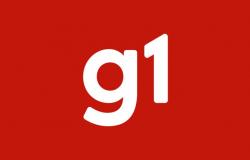| A plate without food is part of the Brazilian routine (Tnia Rego/Agncia Brasil) |
The Brazilian Institute of Geography and Statistics (IBGE) released, this Thursday (25), data on Food Security and Food Insecurity in the Country.
Among the places with the highest level of Food Insecurity are all states in the North and Northeast.
In this regard, Pernambuco appears in seventh position in the national ranking.
The data is from the PNAD Contínua document, made in partnership with the Ministry of Development and Social Assistance, Family and Fight Against Hunger.
According to IBGE, at the end of 2023, PNAD Contínua estimated a total of 3.596 million permanent private homes in Pernambuco.
Of this total, 62.5% were in a food security situation, while 37.5% of the remaining private households were experiencing some degree of food insecurity.
Details
In 2023, according to IBGE, the proportion of households experiencing “mild food insecurity” was 23.5%.
7.45% of private homes had a “moderate” problem and 6.5% had a “serious” situation.
Severe Food Insecurity
Among the Northeastern States, Pernambuco has 6.5% of households with levels of “Severe Food Insecurity”, leaving the State in second place, second only to Maranhão, which has 8.1% of households with IAG.
In the North of the country, Pará has 9.5%, Amazonas 9.1%, Amapá 8.4%
The three states in the South region (Santa Catarina, Paraná and Rio Grande do Sul) are those with the lowest rates of food insecurity, with more than 80% of the population in a food secure situation.
About food insecurity
The IBGE considers a household to be food insecure if its residents, in the last three months, have experienced at least one of the following situations:
They were worried that they would run out of food before they could buy or receive more food;
They ran out of food before they had money to buy more food;
They ran out of money to have a healthy and varied diet;
They only ate a few types of food that they still had because they ran out of money.
Levels
Food insecurity can be classified as mild, moderate or severe, according to the restriction in the quality and quantity of food consumed by residents.
In Brazil
In the fourth quarter of 2023, of the 78.3 million permanent private households in Brazil, 72.4% (56.7 million) were food secure.
In other words, they had permanent access to adequate food.
This proportion grew 9.1 percentage points (pp) compared to the last IBGE survey to investigate the topic, the POF 2017-2018, which had found 63.3% of the country’s households to be food secure.
However, 21.6 million households (27.6%) were affected by some degree of food insecurity.
The most severe form encompassed around 3.2 million households (4.1%). The data are from the Food Security module of the Continuous National Household Sample Survey (PNAD), released today, the 25th, by IBGE.
The research used the Brazilian Food Insecurity Scale (EBIA) as a methodological reference, which allows the identification and classification of households according to the level of food security of their residents.
This is the first time that the Continuous PNAD has made available results according to the EBIA criteria, but four previous IBGE releases have already addressed the topic of food security according to this scale: the Supplements on Food and Nutritional Security (SAN), which were part of the PNAD in 2004, 2009 and 2013, in addition to the Family Budget Survey (POF) 2017-2018.
Tags: State among leaders food insecurity Brazil IBGE Latest Pernambuco .com
--





